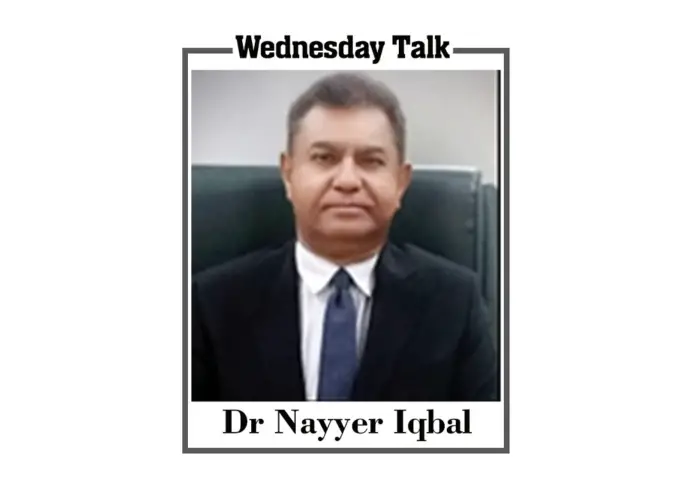Finland’s entry into the NATO on 4 April, 2023 is not an ordinary development, particularly in the back ground of lingering-on Russia-Ukraine war; and the anticipated fall-out. Actually, the chronicle of NATO starts with ‘Treaty of Dunkirk’ signed between UK and France in 1947 to check the expansion of the Soviet power towards Europe in the aftermath of the World War-II. Latter, the ‘Treaty of Brussels’ dated 17 March ,1948, considered to be the real beginning of the organization, included therein Belgium, the Netherlands and Luxemburg as well. Meanwhile, two events of the same year i.e. 1948; ‘Berlin Blockade’ and ‘Communist take-over of Czechoslovakia’ demonstrated the military strength of the U.S.S.R. and weakness of its European adversaries. The British, feeling totally dissatisfied with the arrangement, started working on the U.S. to join it. The American policy-makers also did not take long to appreciate the acuteness of the situation and decided to unite with Europe. After necessary understandings, finally on 4 April, 1949, the U.S., Canada, Italy, Portugal, Norway, Denmark and Iceland signed the pact at Washington which was now named as ‘North Atlantic Treaty Organization’ abbreviated as ‘NATO’. This inter-governmental military alliance which started with 12 members added new members on 9 different occasions and currently stands at 31: 29 European and 2 North American states (after joining of Ukraine). In a nutshell, NATO is a ‘collective security system’ and ‘its member states agree to defend each-other in case of attack by any third party/parties’. During the ‘Cold War’, it operated as ‘a check on the perceived threat posed by the Soviet Union’ and its performance was in no way below the mark. The alliance remained in place after the disintegration of U.S.S.R. and participated in numerous military operations in the Middle East, South Asia, Africa and Balkans. Since-ever, it is headquartered at Brussels; however its military command is based in the outskirts of Mons, Belgium. As per statistics of 2020, its military spending amounted to 57% of the global nominal total. According to the latest understanding, the member states have to ‘reach or maintain the target defense spending of at-least 2% of their GDP by 2024’.
Let us now focus on Finland’s entry into NATO. Though the country became the newest member of the organization on 4 April, 2023 upon depositing the instrument of accession to the ‘North Atlantic Treaty’ with the U.S. at the NATO Head-quarters, Brussels, however, it had a background. Finland had been closely associated with the alliance due to its participation in NATO’s ‘Partnership for Peace’ program in 1994 and later by remaining member of ‘European Union’ since 1995, which largely overlaps NATO in membership. Nonetheless, question remains that Finland, considered to be a hard-core believer in the ‘doctrine of neutrality’ since 1945, changed its policy? Actually, the disintegration of Soviet empire in 1991 pushed the Finish diplomats to strengthen relations with the U.S. and its allies but Russian aggression against Ukraine served as a catalyst to make a quick decision. Russia attacked Ukraine on 22 February, 2022 and Finland officially applied to join NATO on 18 May, 2022—–just after a gap of 3 months. After completion of all the necessary official formalities the country became a member of NATO within a short span of 11 months——‘it was the fastest accession process in the treaty’s history’. The matter could have been concluded even at a faster pace if Turkey and Hungary would not have delayed its ratification for months due to some of their reservations.
Finland’s entry into NATO is both historic and strategic for multiple reasons: on the one hand it has roughly doubled the length of the border that NATO shares with Russia because 1,340-km long Finland’s eastern frontier with Russia has been added to it; and on the other it may prompt the other countries to join this out-and-out anti-Russia military alliance. The gravity of this event for Moscow magnifies as it has happened when Russia is already stuck-up in its war against Ukraine. President Vladimir Putin had anticipated this move and had repeatedly criticized NATO’s expansion before his full-scale invasion of Ukraine. Tara John of CNN viewed on 4 April that ‘Finland’s acceptance into the US-led security alliance presents a blow to Russian President Vladimir Putin, who had long sought to undermine NATO, and before invading Ukraine, demanded the bloc refrain from further expansion’. The U.S. Secretary of State Antony Blinken sarcastically remarked that ‘the Russian leader had triggered exactly what he had sought to prevent’. Political analyst Kate Whiting vide his report dated 5 April, 2023 has indicated that at a time when Ukraine war ‘grinds-on with no resolution in sight’ Finland’s accession to NATO will compel Russia to enhance its military capacity in its western and north-western regions. NATO’s Secretary General Jens Stoltenberg’s statement that it will make ‘Finland safer and NATO stronger’ throws light on the U.S.-led block’s approach in this regard and attempts to lure-in other countries into the fold. Russia can’t remain a silent spectator to the on-going developments; that is why the Kremlin’s spokesperson Dmitry Pskov has warned that Moscow will be ‘watching closely’ what happens in Finland; apart from branding NATO’s augmentation as a threat to Russia’s security and national interests. Moscow has also stressed that ‘further NATO expansion will not bring more stability to Europe’, and ‘it would scale-up forces near Finland if the alliance sent any troops or equipment to the new member country’. If studied objectively, Finland’s ’embrace’ with NATO and many more like Hungary being in the line has pushed Russia into a ‘tight corner’ which may lead to a ‘chain-reaction’ eventually getting out of control of all the ‘players’. Parallel to it, Finland’s official hand-out declared that the era of military non-alignment in their history had come to an end and a ‘new era’ had begun. The statement further added that ‘each country maximizes its own security; and so does Finland’ and NATO’s membership had strengthened its ‘international position and room for maneuver.’ Finland’s contentment may attract the fence-sitters to follow the same route.
The last word: The enlargement of NATO will compel Russia, China and their allies to get closer and the world will be divided into two hostile blocks; certainly a catastrophic trend.







